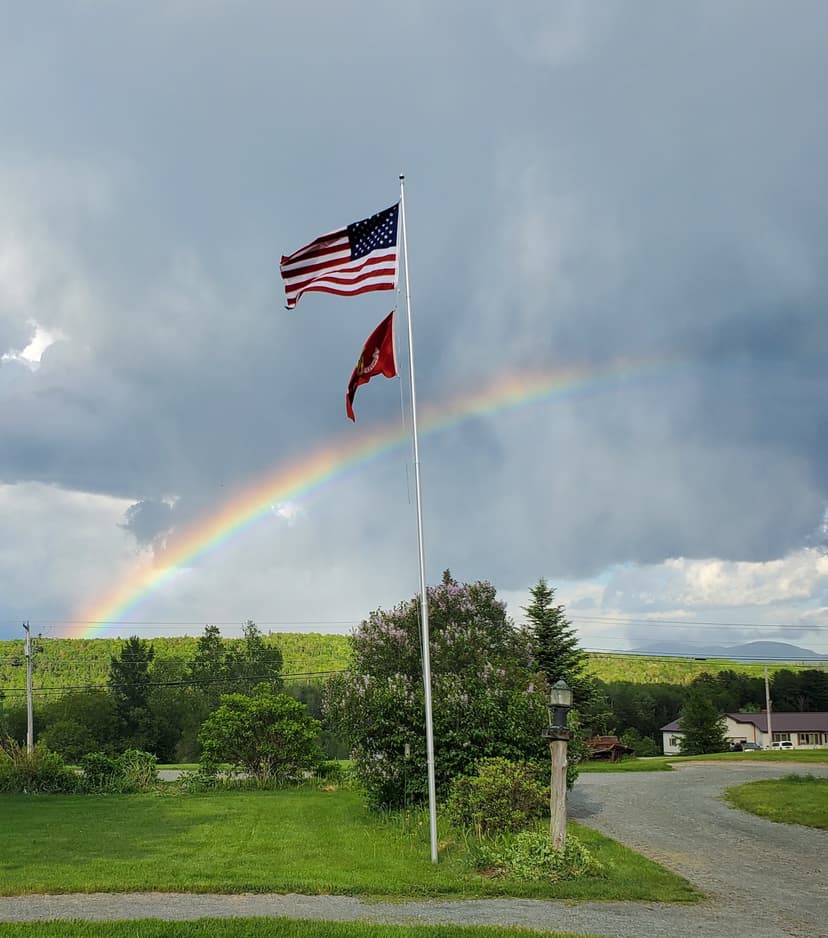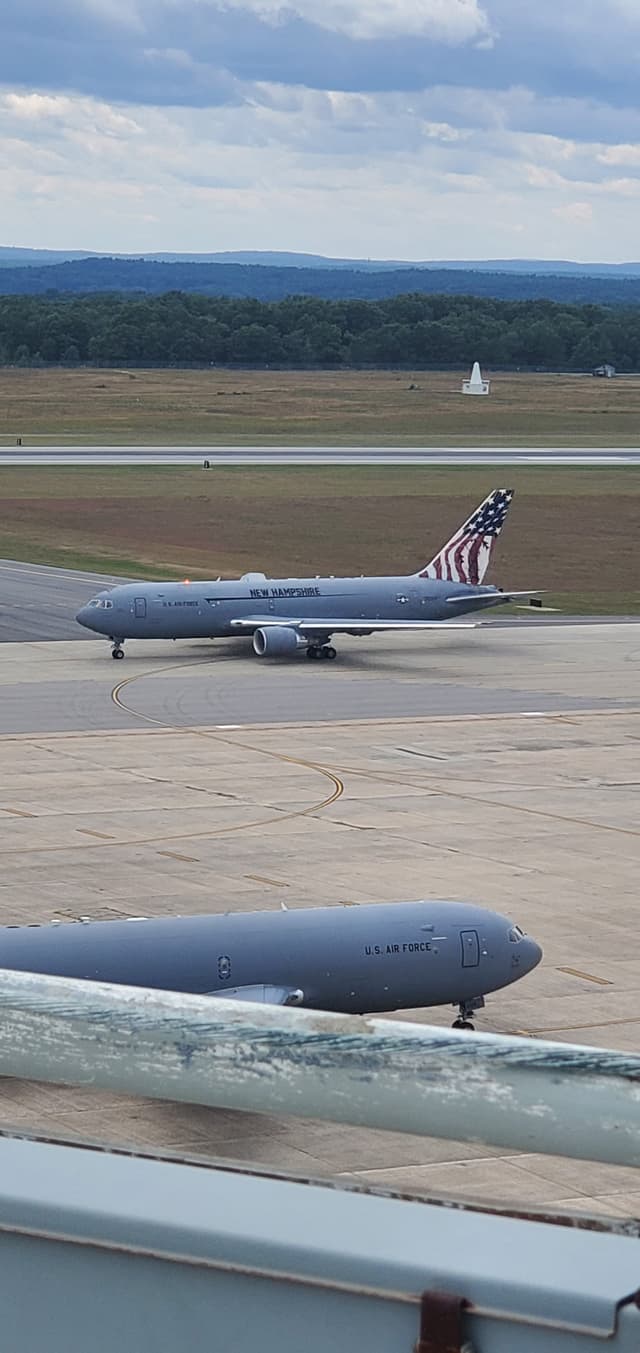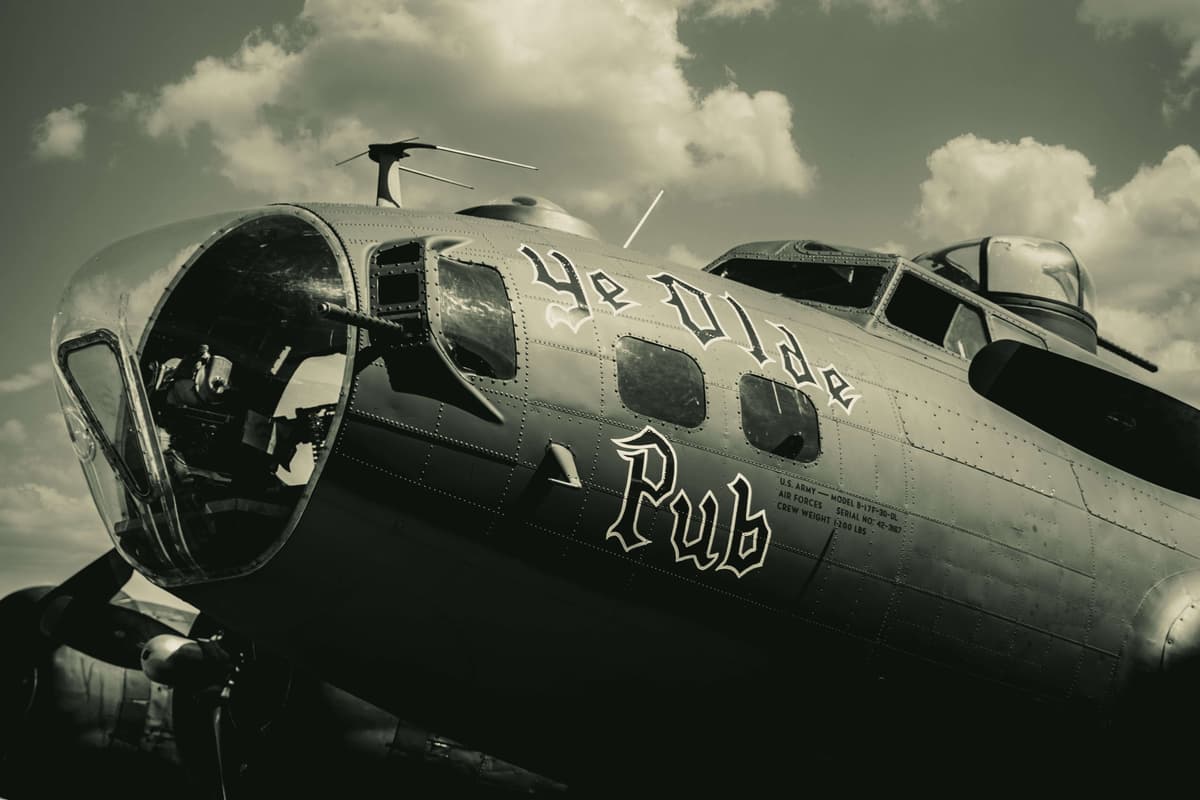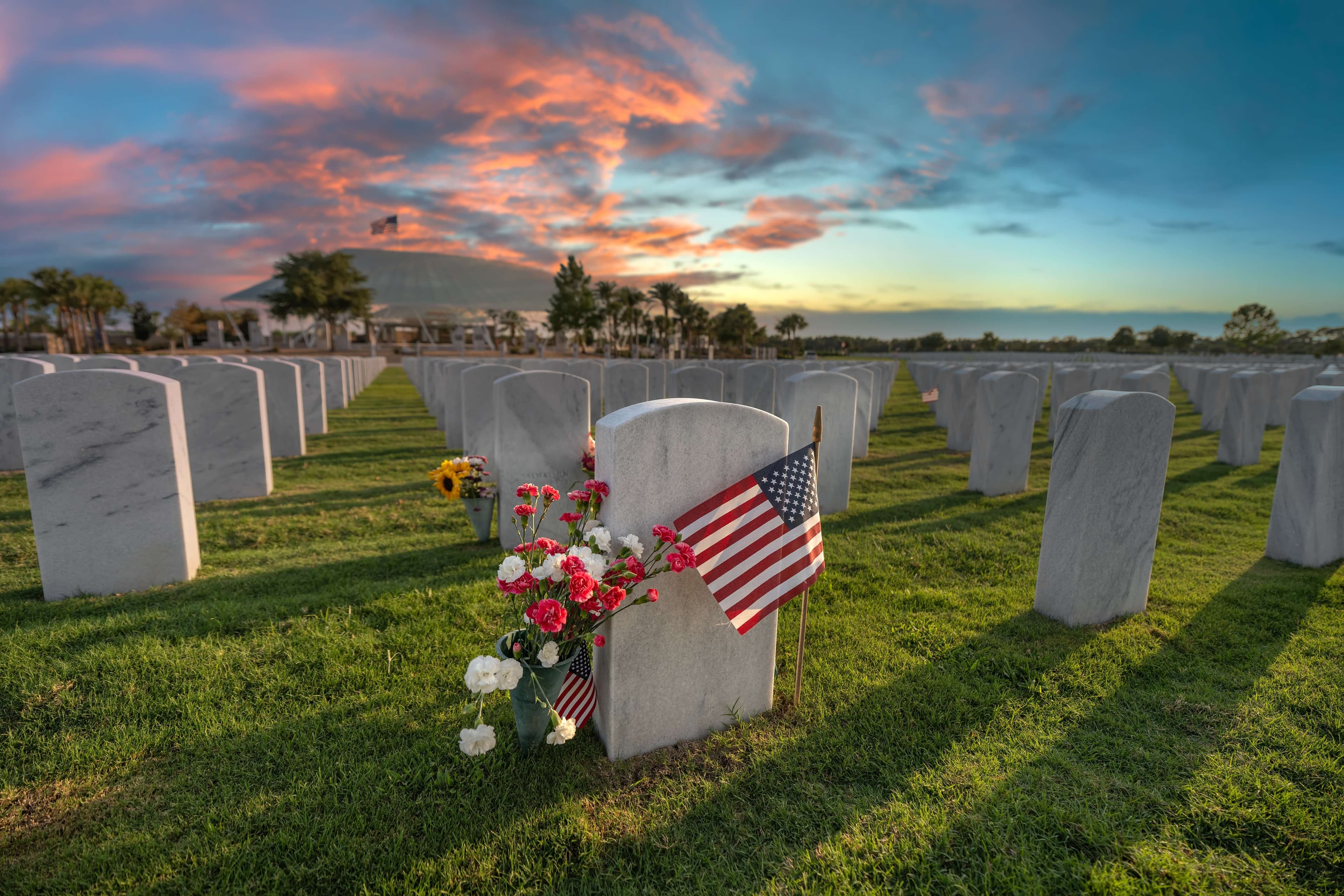Here in Milan, New Hampshire, it’s been a bit of a wet, dreary spring. There are brief periods of sunshine, but it’s been cold, cloudy, and wet for days on end. Everyone is longing for blue skies so we can pursue our outdoor projects and activities. Yet on this Memorial Day weekend, I can’t help but think of the thousands of servicemen and women who selflessly endured torrential downpours in horrible conditions—in Europe, the South Pacific, Korea, and Vietnam—to protect our freedoms. And on the opposite end, where there is no rain but rather scorching heat in the Middle East, Africa, and out at sea, our servicemen worked tirelessly to prevent tyranny from spreading and gave their lives to keep us free. Memorial Day weekend is a time to remember them, to honor them, and to show appreciation to their loved ones so their loss was not in vain.

Here at The Inn at Oxbow Acres, we strive to honor those who have served. One small way we do this is by offering a 10% discount every day for veterans and extending a 15% discount to active and retired military. It’s our way of saying thank you to the men and women who have sacrificed so much for our freedoms.
In previous Memorial Day blogs, we’ve told the stories of local heroes – Michael Durant, originally from Berlin, and Tanner Grone of Gorham, New Hampshire. But in this blog, I’d like to tell the story of Harl Pease – another New Hampshire hero. He is notable to us because Innkeeper Brian served his country while stationed at Pease Air Force Base from 1987 to 2008. Afterward, he worked for the FAA out of Pease, ensuring that radio and radar systems worked correctly so that air traffic controllers could maintain contact with aircraft in their towers. We’ve used the term so frequently – “Pease” – and several airmen have been guests here at the inn, but not everyone knows the significance of that name, which was given to the base in 1957. On this Memorial Day, we want to tell the story.

In 1917, just as the United States became involved in World War I, in the quiet little town of Plymouth, New Hampshire, Harl Pease Jr. entered the world. Little did anyone know, this small-town lad would grow up to embody unyielding courage and sacrifice, leaving a legacy that echoed far beyond the quaint streets of his hometown.
But before I go further, it’s important to put into context the time period that young Harl grew up in. It was only 14 years earlier that Orville and Wilbur Wright made their first successful flight in their Wright Flyer. The age of aviation had begun and developed quickly—not for travel but for warfare.
At the very beginning of WWI, airplanes were primarily used for reconnaissance. Pilots would often wave to each other, and there was very little direct aerial combat. Any attempts to engage an enemy plane were improvised, using pistols, rifles, or even throwing random objects. As the strategic importance of aerial reconnaissance became clear, both sides realized they needed to stop enemy planes from gathering intelligence. This created the demand for aircraft capable of intercepting and destroying other aircraft. By 1915, the Germans created a revolutionary device called an interrupter gear that allowed a machine gun to fire through the arc of a spinning propeller without hitting the blades. This gave German aircraft a significant advantage and began the era of aerial dogfighting with synchronized machine guns. Do you remember the Peanuts cartoon with Snoopy as the Red Baron? It goes back to this time period. Both Allied and Central Powers developed specialized "fighter" aircraft designed for speed and maneuverability, and they were loaded with forward-firing machine guns. Pilots began to develop specific tactics for air-to-air combat, aiming to get behind an enemy plane ("getting on their six") to deliver sustained fire. If you watched Tom Cruise in Top Gun, he was using the "Red Baron’s" tactics because they are still relevant today. (And if you were wondering, the Baron's real name was Manfred von Richthofen.)
As little Harl grew up, he heard stories of the daring nature of air combat, the skill required, and the high scores of individual pilots (known as "aces"). It captivated his imagination, especially as the glorious tales of the aces were continually being used for propaganda to boost morale and encourage enlistment. It was hard to escape the public’s romanticized image of aerial knights.

Harl had always been a determined young man, the kind you could picture climbing apple trees or skipping pebbles across the Pemigewasset River. That determination stayed with him as he grew. By 1939, with the world inching closer to war once again, Harl responded to the call to serve. Aerial weaponry continued to advance, and Harl enlisted in the Army Air Corps, earning his wings as a B-17 bomber pilot in 1940. Assigned to the 19th Bombardment Group, he was among the first to step into the fiery theater of the Pacific.
Life in the Pacific during those early war days was nothing short of harrowing. Harl found himself stationed at Clark Field in the Philippines when Japanese bombers roared in, marking the start of the conflict in that region. He flew mission after mission, sometimes battling the odds, sometimes fighting for survival. His plane, scarred and battle-worn, even helped ferry General Douglas MacArthur and his staff to safety from Mindanao, though the General, as the story goes, wasn’t thrilled about the youth of the pilot or the state of the aircraft.
But it was in the summer of 1942 when Harl’s mettle truly shone. On August 6th, while preparing for a perilous mission near Rabaul in New Britain, one of the engines on his B-17 failed, forcing him to return to the base. Most might have sat that mission out, but not Harl. Determined to contribute, he and a brave crew worked tirelessly to revive a grounded, “unserviceable” B-17. That plane had seen better days, but Harl’s grit made it fly again. Come the early hours of August 7th, running on scant hours of rest, Harl joined his crew and their squadron for the maximum-effort raid on the heavily fortified Japanese airfield.

Their path was fraught with danger. Japanese fighters met the squadron. Harl’s plane bore the brunt. Calmly, navigating his crew with skill and courage, Harl ensured his bombs hit their target. Unfortunately, ehe plane was heavily damaged, and Harl’s battered bomber couldn’t keep pace with the squadron. It became a target. Enemy fighters swarmed, tearing through the skies. Witnesses saw Harl jettison a flaming bomb bay tank in a desperate maneuver before his plane went down.
For months, everyone thought Harl was lost to the sea. The truth came to light after the war when two Catholic priests revealed his fate. Harl and a fellow crew member had survived the crash but were captured by the enemy. Held at a POW camp in Rabaul, they endured weeks of captivity before they were beheaded on October 8, 1942. Harl met his end with quiet bravery, even digging his own grave with dignity before his execution.
The weight of his sacrifice wasn’t lost on those he left behind. On December 2, 1942, President Franklin D. Roosevelt presented Harl’s parents with the Medal of Honor, recognizing the young captain’s gallantry. His name has since been etched into history, from the Pease Air Force Base in New Hampshire to the memorials in his hometown of Plymouth. Even a fragment of his downed B-17 has found its place at the Aviation Museum of New Hampshire, a poignant reminder of his courage. The following video will show you Captain Pease and many others who laid down their lives during WWII.
Harl Pease Jr.’s story is one of determination, bravery, and a steadfast spirit. Yet it is only one of thousands of stories of courageous men and women who braved the elements so we could enjoy the peace we share this weekend. We hope you will take a moment to honor those who showed us what sacrifice truly means. And if you or a loved one is a veteran or is currently serving, please know that you are always welcome at The Inn at Oxbow Acres. It’s our honor to serve you just as you have served us.
At the Inn at Oxbow Acres, we believe that in America, anything is possible - largely due to the protection we enjoy from our Armed Forces. For many, that means the creation of small businesses, and we encourage our readers to support local businesses whenever possible. There are many amazing bed and breakfasts and wedding venues around the country! Each of them has their own stories of local heroes and history, travel tips, and fun things to do. Here are a few of our friends, and if you found this blog interesting, you will enjoy reading theirs as well! Also, if you are visiting New Hampshire and are intriqued by World War II history, we strongly encourage you to visit the Wright Museum of World War II in Wolfeboro.



